
Hayao Miyazaki is a Japanese animator, filmmaker, and manga artist. A co-founder of Studio Ghibli, he has attained international acclaim as a masterful storyteller and creator of Japanese animated feature films, and is widely regarded as one of the most accomplished filmmakers in the history of animation.
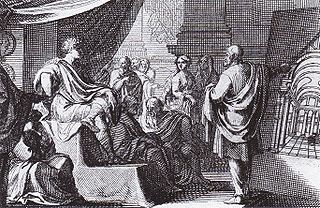
Vitruvius was a Roman architect and engineer during the 1st century BC, known for his multi-volume work titled De architectura. As the only treatise on architecture to survive from antiquity, it has been regarded since the Renaissance as the first book on architectural theory, as well as a major source on the canon of classical architecture. It is not clear to what extent his contemporaries regarded his book as original or important.

Studio Ghibli, Inc. is a Japanese animation studio based in Koganei, Tokyo. It has a strong presence in the animation industry and has expanded its portfolio to include various media formats, such as short subjects, television commercials, and two television films. Their work has been well-received by audiences and recognized with numerous awards. The mascot, and most recognizable symbol, the character Totoro, is a giant spirit inspired by raccoon dogs (tanuki) and cats from the 1988 anime film My Neighbor Totoro. Among the studio's highest-grossing films are Spirited Away (2001), Howl's Moving Castle (2004), and Ponyo (2008). Studio Ghibli was founded on June 15, 1985, by the directors Hayao Miyazaki and Isao Takahata and producer Toshio Suzuki, after acquiring Topcraft's assets. The studio has also collaborated with video game studios on the visual development of several games.

An automaton is a relatively self-operating machine, or control mechanism designed to automatically follow a sequence of operations, or respond to predetermined instructions. Some automata, such as bellstrikers in mechanical clocks, are designed to give the illusion to the casual observer that they are operating under their own power or will, like a mechanical robot. The term has long been commonly associated with automated puppets that resemble moving humans or animals, built to impress and/or to entertain people.
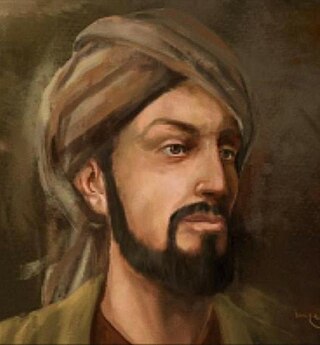
Badīʿ az-Zaman Abu l-ʿIzz ibn Ismāʿīl ibn ar-Razāz al-Jazarī was a Muslim polymath: a scholar, inventor, mechanical engineer, artisan, artist and mathematician from the Artuqid Dynasty of Jazira in Mesopotamia. He is best known for writing The Book of Knowledge of Ingenious Mechanical Devices in 1206, where he described 50 mechanical devices, along with instructions on how to construct them. He is credited with the invention of the elephant clock. He has been described as the "father of robotics" and modern day engineering.
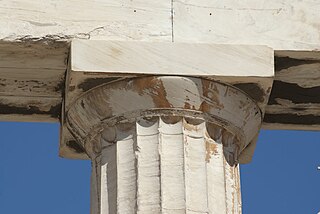
In architecture the capital or chapiter forms the topmost member of a column. It mediates between the column and the load thrusting down upon it, broadening the area of the column's supporting surface. The capital, projecting on each side as it rises to support the abacus, joins the usually square abacus and the usually circular shaft of the column. The capital may be convex, as in the Doric order; concave, as in the inverted bell of the Corinthian order; or scrolling out, as in the Ionic order. These form the three principal types on which all capitals in the classical tradition are based. The Composite order established in the 16th century on a hint from the Arch of Titus, adds Ionic volutes to Corinthian acanthus leaves.

A water clock or clepsydra is a timepiece by which time is measured by the regulated flow of liquid into or out from a vessel, and where the amount is then measured.

Kiki's Delivery Service is a 1989 Japanese animated fantasy film written, produced, and directed by Hayao Miyazaki, adapted from the 1985 novel Kiki's Delivery Service by Eiko Kadono. It was animated by Studio Ghibli for Tokuma Shoten, Yamato Transport and the Nippon Television Network. It stars the voices of Minami Takayama, Rei Sakuma and Kappei Yamaguchi. The story follows Kiki (Takayama), a young witch who moves to a new town and uses her flying ability to earn a living.

Seiko Group Corporation, commonly known as Seiko, is a Japanese maker of watches, clocks, electronic devices, semiconductors, jewelry, and optical products. Founded in 1881 by Kintarō Hattori in Tokyo, Seiko introduced the world's first commercial quartz wristwatch in 1969.

An aeolipile, aeolipyle, or eolipile, from the Greek "αιολουπυλη", also known as a Hero'sengine, is a simple, bladeless radial steam turbine which spins when the central water container is heated. Torque is produced by steam jets exiting the turbine. The Greek-Egyptian mathematician and engineer Hero of Alexandria described the device in the 1st century AD, and many sources give him the credit for its invention. However, Vitruvius was the first to describe this appliance in his De architectura.

A striking clock is a clock that sounds the hours audibly on a bell, gong, or other audible device. In 12-hour striking, used most commonly in striking clocks today, the clock strikes once at 1:00 am, twice at 2:00 am, continuing in this way up to twelve times at 12:00 mid-day, then starts again, striking once at 1:00pm, twice at 2:00 pm, up to twelve times at 12:00 midnight.
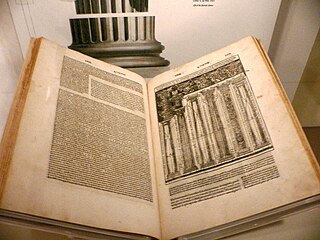
De architectura is a treatise on architecture written by the Roman architect and military engineer Marcus Vitruvius Pollio and dedicated to his patron, the emperor Caesar Augustus, as a guide for building projects. As the only treatise on architecture to survive from antiquity, it has been regarded since the Renaissance as the first book on architectural theory, as well as a major source on the canon of classical architecture. It contains a variety of information on Greek and Roman buildings, as well as prescriptions for the planning and design of military camps, cities, and structures both large and small. Since Vitruvius published before the development of cross vaulting, domes, concrete, and other innovations associated with Imperial Roman architecture, his ten books give no information on these hallmarks of Roman building design and technology.
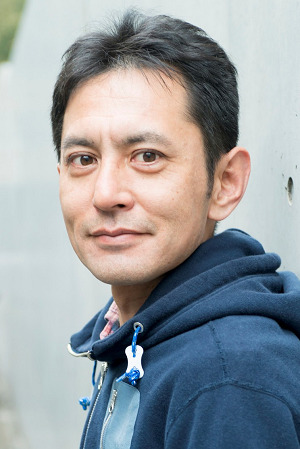
Goro Miyazaki is a Japanese director. He is the son of animator and film director Hayao Miyazaki, who is one of the co-founders of Studio Ghibli. Described as "reluctant" to follow his father's career, Goro initially worked as a landscaper for many years before entering the film business. He has directed three films—Tales from Earthsea (2006), From Up on Poppy Hill (2011), and Earwig and The Witch (2020).
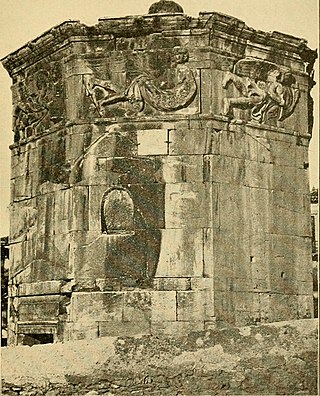
An anemoscope is a device designed to show the direction of the wind, or to indicate a change of wind direction. The name is usually applied to an apparatus consisting of a wind vane above, connecting to a building below by some kind of coupling, and with a dial or index with pointers to show the direction and changes of the wind.

Plaza Senayan is a shopping mall located in Central Jakarta, Indonesia. The mall is a few minutes by car from the Semanggi area; offering shops and services such as designer goods and gourmet food. In January 2017, Forbes recognized Plaza Senayan as one of the top five shopping malls in Jakarta.
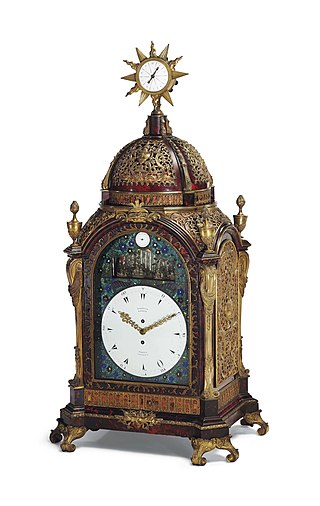
A musical clock is a clock that marks the hours of the day with a musical tune. They can be considered elaborate versions of striking or chiming clocks.

The Royal Arcade is a historic shopping arcade in the central business district of Melbourne, Victoria, Australia. Opened in 1870, it connects Bourke Street Mall to Little Collins Street, with a side offshoot to Elizabeth Street. It is the oldest surviving arcade in Australia, known for its elegant light-filled interior, and the large carved mythic figures of Gog and Magog flanking the southern entry.
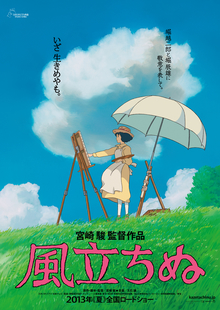
The Wind Rises is a 2013 Japanese animated historical drama film written and directed by Hayao Miyazaki, animated by Studio Ghibli for the Nippon Television Network, Dentsu, Hakuhodo DY Media Partners, Walt Disney Japan, Mitsubishi, Toho and KDDI. It was released in Japan on 20 July 2013 by Toho, and in North America by Touchstone Pictures on 21 February 2014.

Mia Araujo is an Argentine-American painter who is best known for her elaborate and detailed works of surrealist and fantasy imagery. Her work has been shown in internationally recognized galleries, including Roq La Rue Gallery, in Seattle, Corey Helford Gallery, in California, Haven Gallery in Northport, New York, and Dorothy Circus Gallery, in Rome, Italy. Her work has been prominently featured in such high profile arts publications as Hi-Fructose Magazine, Juxtapoz, and Society of Illustrators of Los Angeles.





















